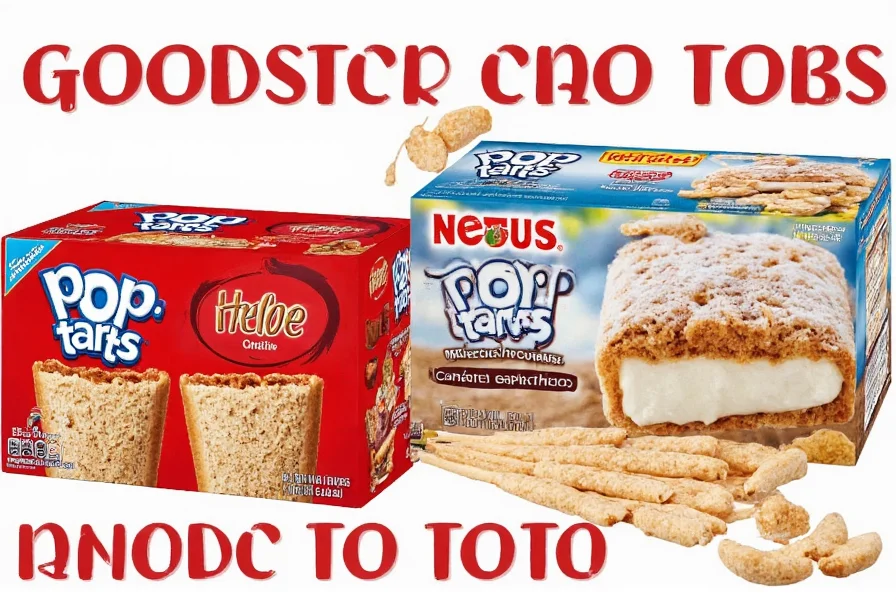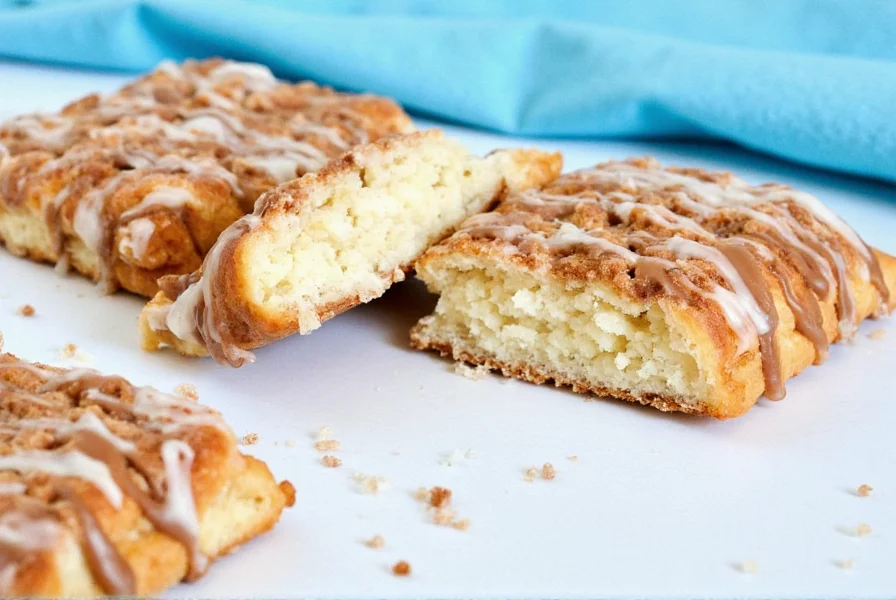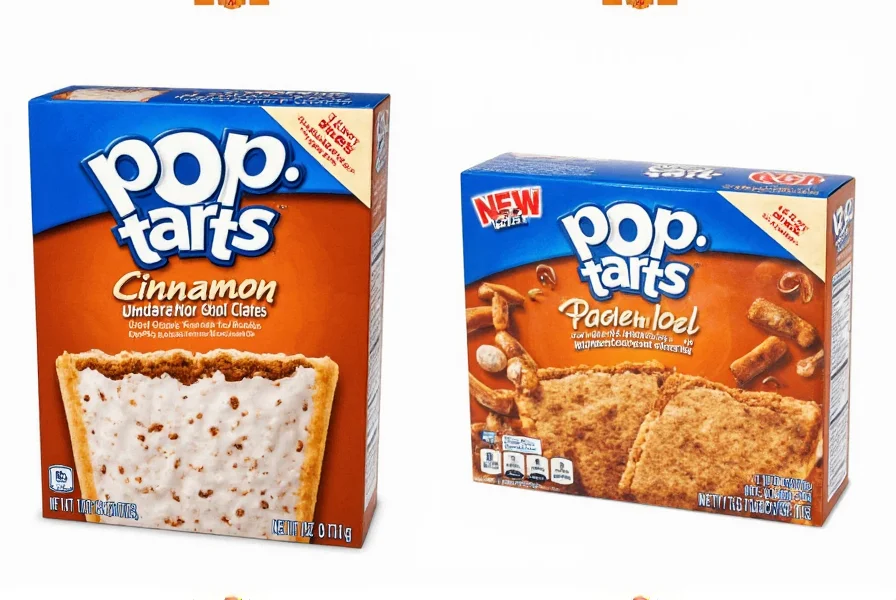For pastry enthusiasts seeking the perfect blend of convenience and indulgence, cinnamon roll pop tarts represent a fascinating evolution in toaster pastry technology. These treats successfully capture the essence of homemade cinnamon rolls while maintaining the shelf-stable convenience that made Pop-Tarts a breakfast staple.
The Evolution of Cinnamon Roll Pop Tarts
While traditional Pop-Tarts debuted in 1964 with simple fruit fillings, the cinnamon roll variety emerged much later as consumer preferences shifted toward more complex flavor profiles. Kellogg's introduced their cinnamon roll version around 2003, recognizing the growing popularity of cinnamon roll-flavored products across the food industry. Unlike their fruit-filled predecessors, these pastries needed to replicate not just flavor but also visual elements—most notably the distinctive swirl pattern associated with baked cinnamon rolls.
Early iterations focused primarily on flavor replication, but modern versions have perfected both taste and appearance. The addition of cream cheese frosting swirls directly on the pastry surface, rather than just in the filling, created a more authentic cinnamon roll experience. This innovation addressed a key limitation of earlier attempts to recreate bakery-style flavors in toaster pastry format.

Ingredient Analysis and Flavor Profile
Cinnamon roll pop tarts contain several distinctive components that differentiate them from standard varieties:
| Component | Traditional Pop-Tart | Cinnamon Roll Pop-Tart |
|---|---|---|
| Filling | Fruit-based jam | Cinnamon-sugar blend with brown sugar notes |
| Surface Treatment | Plain or icing drizzle | Cream cheese frosting swirl pattern |
| Dough Texture | Consistent cracker-like | Slightly softer, more bread-like |
| Flavor Complexity | Single-note fruit flavor | Layered cinnamon, sugar, and cream cheese notes |
The filling typically contains a blend of cinnamon, sugar, and often brown sugar elements to mimic the caramelized notes of baked cinnamon rolls. The cream cheese frosting, while not identical to bakery-style cream cheese icing, provides a tangy counterpoint to the sweet cinnamon filling. Food scientists have carefully balanced these elements to create a cohesive flavor experience that remains stable during the manufacturing and shelf life of the product.
How Cinnamon Roll Pop Tarts Differ from Traditional Cinnamon Rolls
While designed to evoke the beloved bakery treat, cinnamon roll pop tarts differ significantly from their namesake in several important ways:
- Texture: Traditional cinnamon rolls feature a soft, yeasted dough that pulls apart easily, while pop tarts have a cracker-like pastry shell
- Preparation: Cinnamon rolls require baking from scratch or reheating, whereas pop tarts need only toasting
- Portion size: A single pop tart represents about one-third the calories of a standard bakery cinnamon roll
- Ingredient quality: Bakery versions typically use fresh ingredients without preservatives
These differences make cinnamon roll pop tarts an accessible alternative rather than a direct replacement. They serve a different purpose in the pastry ecosystem—providing quick satisfaction of cinnamon roll cravings without the time commitment or caloric density of the original.
Homemade Alternatives and Creative Uses
For those interested in elevating their cinnamon roll pop tart experience, several approaches can enhance the basic product:
- Light toasting: Brief toasting (15-20 seconds) softens the pastry without making it crispy
- Mini marshmallow topping: Adding small marshmallows before toasting creates a gooey topping reminiscent of cinnamon roll icing
- Homemade frosting drizzle: Mixing powdered sugar with cream cheese and milk creates a more authentic icing
- Crumble topping variation: Sprinkling cinnamon-sugar mixture on top before toasting adds texture

Some baking enthusiasts have developed homemade cinnamon roll pop tart recipes that more closely replicate traditional cinnamon rolls while maintaining the convenient rectangular format. These typically involve creating small cinnamon roll spirals encased in pastry dough, offering a more authentic texture and flavor profile than commercial versions.
Consumer Reception and Market Position
Cinnamon roll pop tarts have maintained steady popularity since their introduction, consistently ranking among the top five non-fruit flavors in Pop-Tarts sales. Market research indicates they particularly appeal to:
- Adult consumers seeking nostalgic treats with more complex flavors
- College students and busy professionals needing quick breakfast solutions
- Parents looking for convenient treats that children enjoy
- Travelers needing non-perishable snack options
The product successfully bridges the gap between childhood nostalgia and adult flavor preferences, explaining its enduring market position. Unlike limited-edition seasonal flavors, cinnamon roll has remained a permanent offering due to consistent consumer demand.
Nutritional Considerations
While undeniably a treat food, cinnamon roll pop tarts offer some nutritional advantages over traditional cinnamon rolls:
- Lower calorie count (approximately 200 calories per pastry versus 300-500 for bakery versions)
- Portion control (single-serve packaging prevents overindulgence)
- Longer shelf life reduces food waste
- Some varieties now offer reduced-sugar options
However, they remain high in refined sugars and contain preservatives not found in homemade versions. Consumers seeking cinnamon roll pop tart nutrition facts should check specific product labels, as formulations vary by region and production year.
Where to Find Cinnamon Roll Pop Tarts
These pastries are widely available through standard grocery distribution channels. Major supermarkets typically stock them in the breakfast or snack aisle alongside other toaster pastries. They're also commonly found in convenience stores, college campus stores, and online retailers. During holiday seasons, some specialty versions with additional frosting or seasonal packaging may appear.
Conclusion
Cinnamon roll pop tarts represent a successful fusion of two beloved pastry traditions, offering convenience without completely sacrificing the flavor experience of their bakery-inspired namesake. While they differ significantly from traditional cinnamon rolls in texture and ingredient quality, they serve a distinct purpose in the modern food landscape as a quick, consistent, and accessible treat. Understanding their place within the broader pastry ecosystem helps consumers make informed choices about when these convenient treats best satisfy their cravings.











 浙公网安备
33010002000092号
浙公网安备
33010002000092号 浙B2-20120091-4
浙B2-20120091-4